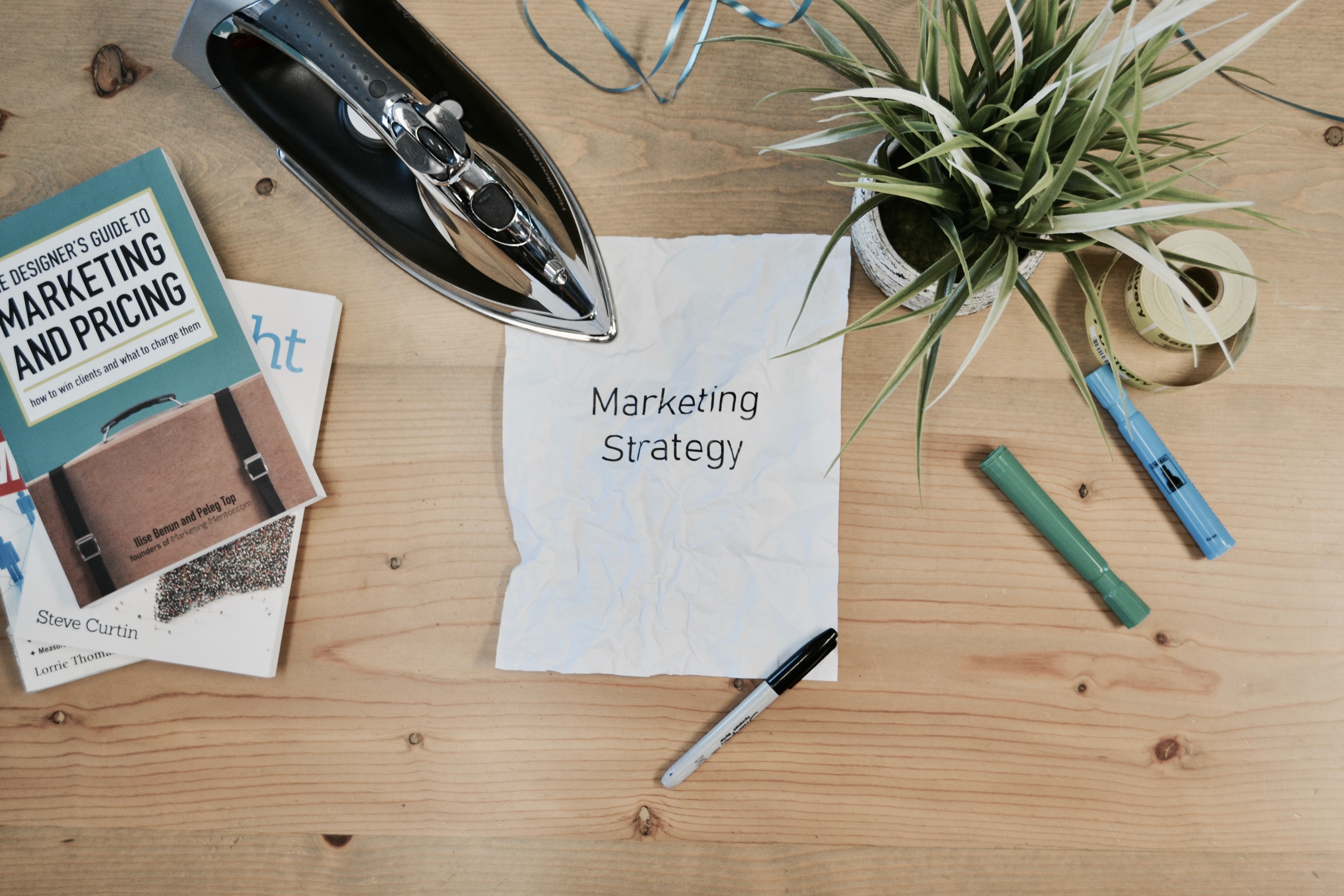

A common frustration we hear from clients is that when it comes to marketing, they don’t know where to start. At LŪM Studio, we never begin a project, for our clients or ourselves, without first developing a strategy. Your strategy can go several different ways and should have many different parts to it that ultimately come together to achieve your marketing goals. Read through our guide that lays out the tools and tactics to create the best strategy for your brand.
- 5 Elements of Strategy
- 10 Free Tools You Should Be Using
- Branding Strategy
- Get on Social Media
- Paid Advertising
Strategy
The Importance of Strategy
.png?width=300&name=Target%20Audiene%20(2).png)
One of the hallmarks of our LŪM Studio process is to facilitate a strategy meeting with our clients. This meeting is the beginning of our client relationship and it’s where we deep dive into their business, help establish goals, determine audience and messaging, develop a schedule, and set up metrics to ensure we’re on the right road to success for our clients.
So, what exactly does it mean to develop a strategy and what do we need to identify? We’ve broken it down into 5 elements that every solid strategy should include.
- Just as it’s important to have goals in life, your marketing strategy should align with your overall business goals. Critical components of any goal are clarity and measurement. Without clearly articulating your goals and establishing metrics, it will be tough to know when you’ve reached your goals. Check out our blog posts for more on the importance of goal setting and how to set good goals.
- Audience Analysis. One of the most important questions we ask is, ‘who is your audience?’ Answering this simple (yet layered) question determines just about everything about your brand, including your overall marketing strategy. Learn more about the importance of Audience Analysis and some key questions you need to answer.
- Once you know who you’re talking to, it’s time to identify what you want to say. Messaging is a crucial part of any strategy. Identifying key messages creates consistency in your marketing efforts and helps keep your efforts focused on your audience and your overall goals.
- Timeline/Schedule. You should never have a strategy for the sake of having one. Rather than sitting on a shelf, use your strategy! A good way to ensure that happens is to set up a timeline and/or schedule with action items so you know the goals you set are on track to being met. This is also a great place to include accountability, so you know who’s responsible for executing each tactic in your strategy.
- We are all about measuring goals at LŪM Studio because we believe in knowing whether your time, money, and energy are paying off. Once you’ve set measurable goals, you now need to see if that work is paying off or if you need to shift directions to ensure you’re making your budget and resources work hardest for you. In case you need some assistance with measurement, we’ve outlined some tools to get your measurement on track.
Developing a strategy, including these five steps, should not be a one-and-done exercise. Just as your business evolves, your strategy should too and it’s important to check-in on the elements in your strategy to ensure everything is still aligned with your brand and your overall business goals.
For some, developing a strategy can be overwhelming but we like to think we’ve developed a process that makes it easy for you to lay the foundation for a successful marketing and communication journey; ensuring we all know where we’re going and how we’re going to get there.
↓ Click the Photo to Download The 8 Free Tools You Should Be Using ↓
A 50’ View of Brand Strategy
In this guide, it’ll become clear that there’s not one golden tool or tactic that will grow your business. But, instead, it’s the harmonious and effective implementation of many that get things moving.
One of those tools and tactics to grow your business is a developing and implementing a brand strategy. A brand strategy can mean the difference between a well-defined, understood brand and one no one has heard of. Your brand strategy should be a well-communicated and thoughtful long-term plan that describes the evolution of your brand.
As we’ve said before, we define a brand as every thought or perception a consumer has about your organization or product(s) and we define branding as the actions you take and the process you implement to influence and shape consumer thoughts and perceptions.
So, what goes into a brand strategy and how long does it take? The truth is, there’s a lot of research, preparation, decision making, development and refinement that goes into creating a solid brand strategy and it should never, ever end. There’s definitely a significant amount of up-front work, when you’re creating your brand or rebranding, that needs to be done like research, audience analysis, messaging development, logo and brand feature designs and much, much more. If all of these elements are done and communicated effectively, implementing your brand on a day-to-day basis becomes much easier. However, the implementation, management and oversight of your brand should always remain a critical focal point of your business.
One of the best places to capture your brand strategy is in your brand identity guide, or brand standards. This document provides a single home for all of your brand information like your purpose, values, colors, tone, logo and brand feature usage, brand pillars, messaging and much more. As an implementable guide, it should be easy to share and use. Coach your employees, board and partners to think of it as your business’ holy book and encourage them to read it front-to-back so they know everything about communicating and displaying your brand. If creating your brand is a sprint, then consistency is the marathon. The easiest way for your brand to get derailed is for stakeholders to not know, understand or buy into it. And, the brand identity guide, is a way to ensure everyone talking about or displaying your brand understands what you’re trying to do.
In the end, the goal is a purposeful, bold brand that consumers can connect with and one where they clearly see true value.

Get On Social Media Now
Social media is powerful. In seconds, content can be shared and potentially reach masses of people around the globe. Anyone can create a business page to promote their business and share information. But the important question is, are they reaching the right audience and in turn increasing their brand’s awareness, resulting in an action that benefits their business?
Whether you are or aren’t currently engaged in social media from your business’ perspective, it’s hard to deny the power and impact it has on influencing purchasing decisions. If you’re having trouble deciding if you want to join the masses, just keep in mind that your competition and your customers are already active on social media. That thought alone should influence you to jump on the social media train. Why? Because utilizing social media can help you influence your existing and potential client’s actions when it comes to interacting with your business and your competitors.
 Having your social media platforms up and present may be the first step, but it shouldn’t start and end there. Having a social media strategy is important and must not be overlooked. What does a social media strategy look like? It is not a detailed list of actionable items, but a simple outline of tactics that tie back to your overall goals. Your social media strategy should be working in parallel with your other marketing initiatives simultaneously.
Having your social media platforms up and present may be the first step, but it shouldn’t start and end there. Having a social media strategy is important and must not be overlooked. What does a social media strategy look like? It is not a detailed list of actionable items, but a simple outline of tactics that tie back to your overall goals. Your social media strategy should be working in parallel with your other marketing initiatives simultaneously.
So why not just wing it and forgo a social media strategy? Here are a few reasons why:
-
- Social media is where it’s at… and it’s not going away! According to Hootsuite, in 2022, 55% of the total world’s population are using social networks – that’s 3.48 billion people! It’s growing and not going anywhere. You’re way behind in the game if you’re not using social media platforms for your business, in the right way!
- Your competition is on social media, where are you!? Without a strategy and a proper presence on social, your competitors automatically benefit, giving them the competitive edge. Those with a strategy in place have a better success rate because they can plan, prioritize, execute, monitor and strategically adjust their approach.
- Connect with your audience. It’s a free, easy way of connecting you with your audience! Social media makes it easy for your clients to connect with you. The first step is knowing your audience. Because social media interactions are fairly instantaneous, clients will appreciate feeling like they have access to you.
- Improve brand awareness and loyalty. 90% of brands use social media to increase brand awareness. More than 40% of digital consumers use social networks to research new brands or products (Hootsuite). Connecting with your audience as stated above and building a bond with them, supports brand awareness and loyalty. Potential clients also rely on social media networks for research on who they plan to do business with.
- A solid social media strategy will help you generate traffic and potential leads. When used alongside other tools like your website, and other traditional methods, social media can help you gain rapid exposure.
- It can be an affordable marketing tool. 53% of businesses use social media advertising. Nearly all social media platforms are free to establish and a majority of them also have affordable advertising options. For a small amount of money, you can reach a very targeted group of people – ideally the exact audience you have identified.
- Sales! Purchasing decisions are influenced by social media. The more credible information that is out there about your business and the relationships you have with potential and existing clients, will help you secure more sales. People do business with who they trust. The more information that they can find directly from the source and other users, the better.
- Key influencers exist. These individuals can make or break you based on their reviews of your products. These individuals are often recognized as professionals in certain markets or fields. They are influencers and can take your business to another level… or destroy you. Identify some key players, build relationships with them.
- Reputation management – get in control before it controls you! Completely disconnecting yourself and ignoring social media entirely, along with what people say about you, is the wrong approach. Being in control of your social media platforms and having a plan and strategy in place before something turns south is critical. Social media is great for reviews, but it’s also a space where you can be responsive to both the good and the bad.
- Enhance your SEO. Your website’s search engine optimization is no longer just based on regular updates to your website. A strong, regular social media presence will help your search engine ranking that much stronger.
Having a social media strategy and sticking to it will benefit your business. Your competition is already out there. Having an active, engaging and professional social media presence will enhance your brand, create more awareness, reach your target audience, expand your digital reach and improve sales.
Utilize Paid Advertising
In the past, when you wanted to get your business recognized, you purchased an ad in the newspaper, or maybe even the yellow pages (what are those?!). But anymore, to stay on top of the game, you have to stay in the palms of your consumers' hands and that means it's time to step up your advertising game.
Traditional and digital ads both have merit. It's important to consider who you're trying to reach and the action you're wanting your audience to take when choosing what type of paid advertising to move forward with. If appropriate, together they will really help you to cover as much area as possible to get your product or service in front of your target audience. Here are some of the best ways to use paid advertising to your advantage in a social media driven world.
- Broadcast TV. Yes! This is still a great place to show off your brand. In fact, it is considered one of the most effective digital tools. With the rise and popularity of video ads, these 15 to 60-second ad spots are short enough to hold your consumers' attention, but long enough to get you noticed.
- Social Media Ads. Using paid social media ads are one of the easiest ways to spread the word about your business. Creating the ad is simple as it will be in the format of whichever platform you are using. All you have to do is provide the info and a credit card number. The best part of these ads are the report options associated with them. When setting up the ad, you can target it to your desired audience. This will ensure that your content is relevant to the people seeing it and the real-time results will show how many people your ad reached, how many clicks your ad received, and much more.
- Print Advertising. Don't just think of print news as the newspaper. There are many other forms of print advertising including trade publications, magazines, journals and newsletters. The downside to these is the lack of analytics to measure the overall effectiveness of a print ad. The burden is often placed on the advertiser to include a landing page or other tool in order to measure accurate results.
- Digital Display Ads. You see these ads all the time. In a sidebar, a banner on a web page, even a pop-up as you are reading a blog. These digital display ads are effective because they are always where your eyes are. That is why using images and text to create an online ad is one of the most popular forms of advertising. When you use this type of ad, make it bold to catch the eye of your target audience and whisk them away to your site.
There are many tools and tactics to help grow your business, you just have to know where to look. Using several free options, including the ones outlined in our guide, are a great way to get started. Creating a strategy for every area of your business from social media to content to advertising is extremely important; it ensures your team is on the same page as you execute your goals, saving your business time and money. The great thing about these tools and tactics is that they help to support your plan and make this whole process easy-peasy.
You can also contact us at hello@lumstudio.com to ask any questions or get started today.


